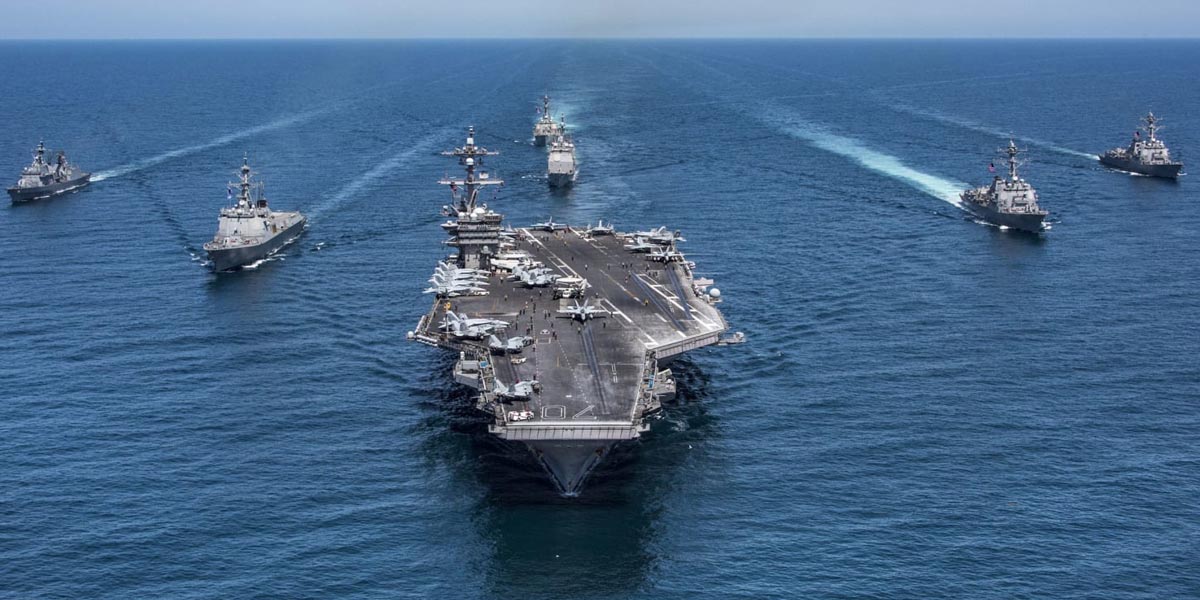A “Two Ocean Navy” for the 21st Century
In 1940, over a year before the United States formally entered the Second World War, Congress passed the Two Ocean Navy Act. The act and its predecessors in 1934 and 1938, foresaw the need for a stronger investment in naval aviation, aircraft carriers, and submarines. This visionary act authorized many of the warships that contributed to America’s victory over Japan.
As the War on Terror wanes and the US shifts its military priorities to countering Russian and Chinese expansionism. What can be done today to prepare the United States for the next conflict? What would a “Two Ocean Navy Act” look like today if someone possessed the same visionary foresight of Representative Carl Vinson? What ships might prove most useful in defending the United States throughout the 21st Century?
Carl Vinson’s Vision
In the years following the First World War the US assumed that the British Navy would maintain security in the Atlantic Ocean, allowing the US Navy to be concentrated in the Pacific to counter Japan. In May of 1940 Germany invaded the Low Countries and France. By June the French Army had been defeated and British had been forced to evacuate hundreds of thousands of soldiers from Dunkirk. The US Navy informed Congress that under the circumstances the United States could no longer count upon British protection in the Atlantic. Thus, the Navy requested a shipbuilding campaign to prepare a “two ocean navy.” Carl Vinson (D-GA), a Congressman from Georgia, served as the chairman of the House Naval Affairs Committee. In 1940, he introduced legislation to expand the US Navy drastically.

The legislation authorized the construction of 18 aircraft carriers, 27 cruisers, 115 destroyers, and 43 submarines. Additional funding was available for 15,000 naval aircraft. The bill planned to double, very nearly, the size of the Navy at the time. The bill appropriated $8.5 billion over the course of six years. It also authorized 7 battleships that were ultimately cancelled in 1943, when it became clear that battleships were not essential to the war effort. Representative Vinson said the emphasis on carriers did not represent any less commitment to battleships, but “The modern development of aircraft has demonstrated conclusively that the backbone of the Navy today is the aircraft carrier. The carrier, with destroyers, cruisers and submarines grouped around it, is the spearhead of all modern naval task forces.”
Vinson’s visionary legislation began the process of designing and developing the ships that would lead the US to victory in the Second World War. The legislation recognized the need to emphasize naval aviation and provide the long-range firepower required to overcome Japanese naval air capabilities. It provided destroyers for anti-submarine warfare in the North Atlantic and the Pacific. The submarines built under this act contributed significantly to the war effort: US submarines sank 2/3rds of the Japanese merchant fleet and 1/3rd of Japanese warships. Although that success is also owed to the indifference Imperial Japanese Naval leadership showed to anti-submarine warfare. Nevertheless, the ships of the Two Ocean Navy Act would prove to be essential to America’s WWII victory. Many of the carriers built under this bill, along with the Iowa class battleships authorized in the Naval Act of 1938, continued to operate until the conclusion of the Cold War in the early 1990’s.
Sadly, the Navy today is casting about without a well conceived plan and there has been much disagreement between the Navy, the Administration, and Congressional leaders about naval procurement. The Navy has also made a number of short-sighted decisions for small cost savings that is proving to be “penny wise and pound foolish.” A clear and consistent plan for naval procurement in the forthcoming decades needs to be developed. While the Navy needs to be drastically expanded, there can be some cost savings in the process, if planners and policymakers are willing to consider alternatives to the traditional approaches.
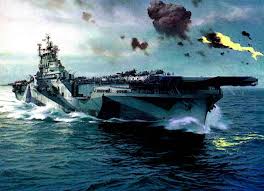
The Super-Carrier Trap
Like the battleship admirals of the early 20th Century, America’s naval leadership is perhaps too dedicated to super-carriers as the focus of America’s naval forces. These powerful carriers are nuclear powered and do not require frequent refueling. The Nimitz Class super-carriers (to include the George Washington, a variant of the Nimitz Class) can carry about 70 aircraft and each warship can thus project enough firepower to defeat an entire nation-state. The new Ford Class super-carriers can carry up to 90 aircraft. Each carrier is typically equipped with only 40 planes at any given time although these squadrons can be augmented in times of high tension.
A carrier task force is a powerful force that includes the super-carrier’s escorts, destroyers, a submarine, and auxiliary supply ships to expand the carrier’s power. There are vulnerabilities, however. A single nuclear warhead could destroy an entire carrier task force. Anti-ship missiles have proliferated, like China’s Silkworm missile, that could destroy or disable a super-carrier. Quiet diesel-electric submarines can lay in wait on the seafloor for an opportunity to strike. A single, lucky shot from these weapons could disable or destroy a critical naval asset. In the case of the new USS Gerald Ford Class, a $13 billion investment.
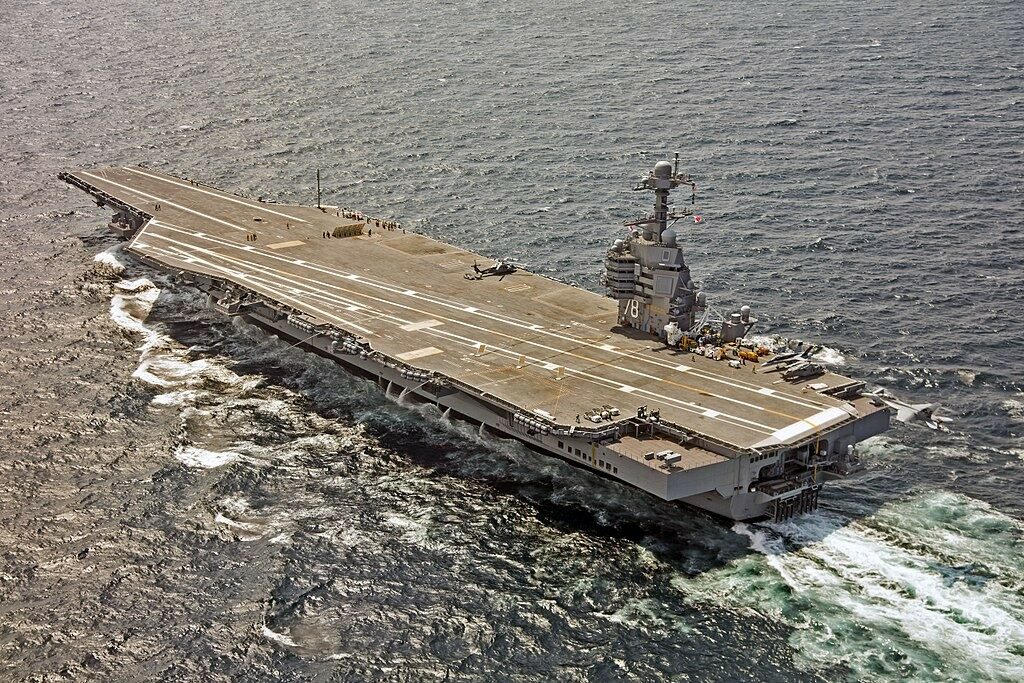
Nevertheless, aircraft carriers are an important component of the US Navy. Since it is unlikely that any future conflict will be fought close to the United States, the Navy must project force far from home. The US Navy currently operates 10 super-carriers. The USS Ford (CVN-78) is slated to join the fleet soon, although there have been several delays in delivery, and the USS John F. Kennedy (CVN-79) is scheduled to join the fleet early in the coming decade. That means there will be 12 total carriers as long as the oldest of the Nimitz Class super-carriers remain in operation. The new USS Enterprise (CVN-80) is scheduled to enter service circa 2030, and the as yet unnamed carriers CVN-81 and CVN-82 are scheduled to join the fleet by 2040. The Navy will thus struggle to maintain 12 operational super-carriers.
There was a controversy recently over whether to refuel the USS Harry S Truman (CVN-75), an example of the kind of challenges that face the Navy today. A nuclear carrier needs to be refueled at least once in its operational lifetime. The Navy felt the cost was too great and seriously considered placing the ship in reserves (moth balls) where it could be brought back into service in the future. Thankfully, the administration and Congress have intervened to see to it that the Truman be refueled and remain operational.
The American doctrine of always building the largest, most complex, and highest tech warships may challenge cost-effective expansion of carrier forces. The United Kingdom recently completed two conventionally powered carriers (oil powered, not nuclear) at a total cost of about $7 billion (in 2015 dollars). The Queen Elizabeth and Queen Victoria are able to field 40 aircraft each, the same number typically deployed on American super-carriers. While they need to be fueled from time to time, this does not limit their range of operation, as they can be refueled at sea by means of Underway Replenishment (UNREP).
The United States could certainly build similar conventional carriers to augment its carrier forces. Such conventional carriers could be built for a cost of $4 or 5 billion each. The Navy could procure 3 for the cost of a single Ford Class super-carrier. These ships would have smaller crews and a lower cost of operation than a nuclear powered super-carrier. If 3 of these carriers were procured by 2030, the Navy would soon have 14 operable carriers, even after the Nimitz (CVN-68) and Eisenhower (CVN-69) reach the end of their operational lifespans (in 2025 and 2027 respectively).
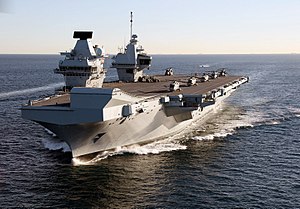
Thereafter, the Navy could reduce costs by replacing every second Nimitz Class super-carrier as it reaches its retirement age with one conventional carrier and the remaining ships with Ford Class Super-carriers. When the last Nimitz Class super-carrier, the USS George Bush (CVN-77), reaches the end of its operational lifespan around 2059, the Navy would have 7 Ford Class Super-carriers and 7 conventional carriers. Needless to say, 14 carriers can cover more ocean, conduct more patrols, and keep a larger force more reliably at sea than 12, and under this proposal, at a reduced cost. In 2019 dollars, the cost of the 7 conventional carriers would be approximately $35 billion and the cost of the 5 more Ford class carriers (two have already been built) over the same period would be $67 billion, for a total cost of $102 billion. To maintain 12 fleet carriers by building only Ford Class carriers between now and the retirement of the George Bush would require the construction of 10 Ford class carriers at a cost of about $135 billion. That does not account for the higher cost of operation of these larger carriers. It is more likely that the Navy would simply have to reduce the number of operational carriers, given the cost, and that will significantly weaken America’s ability to project force. More carriers for less overall cost? That is a win-win.
Essential Destroyers
To defend freedom of navigation the United States needs to maintain a large force of surface ships that can spread out over the world’s oceans. Our destroyers are the primary warship for this mission. Threats to freedom of navigation are serious and prolific from modern piracy to terrorism. Iran was recently caught attacking oil tankers in the Straight of Hormuz, for example. Positioning American destroyers around the world to protect the freedom of navigation is essential to the global economy.
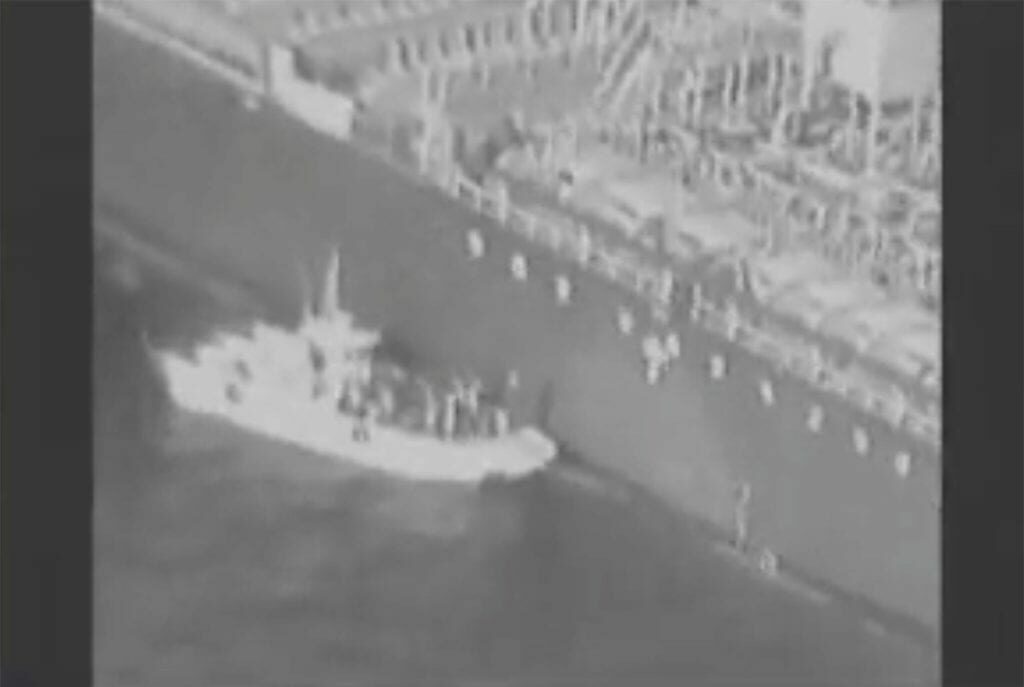
The Arleigh Burke Class destroyer, named for an American destroyer Admiral of WWII fame, has proven itself as America’s primary surface combatant. These ships can provide escort for carrier battle groups, support amphibious operations, and operate on solo patrols. The Arleigh Burke offers a deadly anti-ship capability, can conduct anti-submarine warfare, and provide anti-air protection. Some have also been modified for use in tracking and intercepting ballistic missiles. This is a class of very versatile and capable ships.
In addition to its other roles, the American destroyer is the essential maritime patrol and protection vessel. In any future conflict a potential enemy could cause incalculable damage to the global economy by preying upon civilian commercial vessels. These ships cannot adequately defend themselves from Somali pirates let alone anti-ship missiles.
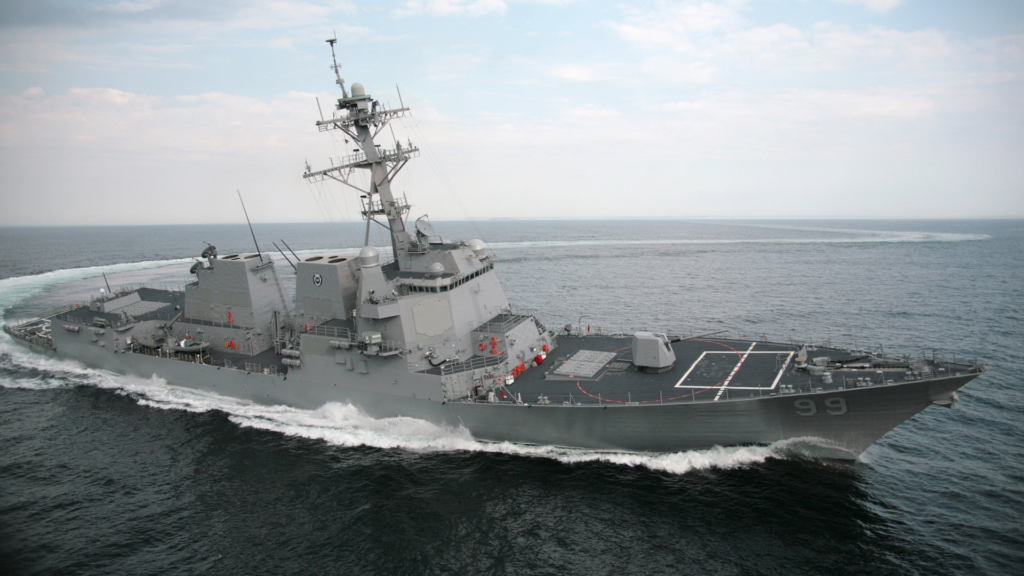
In the near future, the Navy will need a replacement for this class of destroyers, in force. Recently, naval planners have tried to divide the role played by destroyers into two types of ship: a heavy destroyer and the Littoral Combat Ship (LCS). The USS Zumwalt (DD-1000) and its two sister ships were meant to be only the first of 20 ships intended to take on the “heavy lifting” of the destroyer mission. These stealthy warships present the radar cross-section of small fishing boat and pack a powerful punch of missiles. Unfortunately, problems with the cost of these warships meant that only the three were built. Since their completion, these ships have been beset by problems with their propulsion systems, and have proven to be unreliable in operation.
These ships were intended to have two large deck guns that could strike targets at a range of 60 miles, giving them the ability to replace the Iowa Class battleships decommissioned at the end of the Cold War. During and since the Second World War, American battleships have had a role in the support of amphibious landings with heavy bombardment. They also escort carriers and served to defend carriers from enemy surface ships. In order that the Zumwalt Class destroyers might better fill that role, two large guns with a 60 mile range were to be installed. It was recently determined that even these guns are too expensive for the Navy. Without its signature canons, the Zumwalt is a warship without a mission. At least one proposal has been fielded to convert them into large missile carriers by filling the space set aside for the gun turrets with missile batteries. This could offer the ships new life as “pocket battleships” with an incredible anti-ship and land strike capability.
The Littoral Combat Ship was another program intended to take on some of the lighter missions of destroyers and a new role in close support of ground operations. As the name suggests these ships were designed to operate in littoral zones (close to shore). Again, reliability problems have beset these ships and both the Freedom Class and stealthy Independence Class ships of the LCS series have suffered a range of issues from propulsion failure to crew fatigue. The reduced crew size means the crews are often overworked. The LCS is certainly a sound approach to handling some of the destroyer’s mission. They can support ground landings and provide some anti-ship and anti-air capabilities. The destroyer remains the core of the naval surface forces.
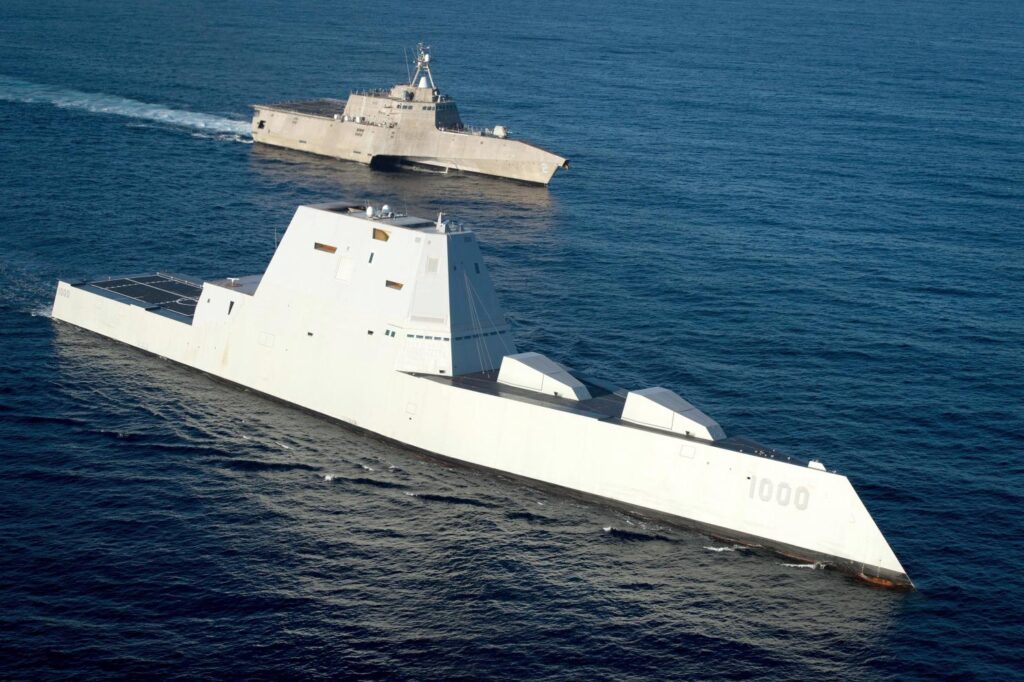
The Navy is also running out of time with its Cruisers. Intended as a large surface combatant and missile battery, the Ticonderoga Class cruiser is aging. Of the 22 cruisers, 6 will reach the end of their service lifespans by 2022. What is more, the Navy is considering a cancellation of a planned life extension program aimed at these ships. What is worse, the Navy lacks a coherent plan to replace these cruisers. Several ideas have been floated including a new Frigate (FFG) program, a modular cruiser design (likely to face the same difficulties that plague the LCS ships), and again a possible redesign of the Zumwalt Class now that many of the bugs have been worked out. The Zumwalt reenvisioned as a missile cruiser would present a formidable surface combatant. The three existing ships can be refitted to this role and future ships built to those specifications. These would be modern battle cruisers with no comparable competitor in foreign navies. Unfortunately, as in other areas of ship design there is no consistent plan from the Navy at this time.
The Navy desperately needs a new destroyer class that is reliable, has greater capabilities than the current Arleigh Burke Class ships, with more powerful, cutting edge weapons systems. In any conflict with Russia or China our surface ships will need lethal anti-air, anti-ship, and anti-submarine capabilities. Stealth would be an advantage as it can make detection of the vessel difficult and it makes it harder for enemy munitions to “lock on” and strike the vessel. If reduced stealth saves dollars while also providing a capable combat ship, that may be the direction the Navy must go. At least 60 of these new destroyers need to be built in the coming decades and the clock is ticking.
Silent and Deadly
Submarines are the ultimate naval weapon, combining inherent stealth and lethality in exponential measure to the resources in men, material, and finances invested. In the Second World War, US submarines certainly proved this true by devastating the Japanese economy. The inclusion of nuclear power only enhanced the submarine’s lethality by allowing boats to operate undersea for extended periods without having to surface to recharge batteries. Nuclear boats are also much faster than conventional submarines. During the Cold War, submarines took on two new missions of critical importance: nuclear deterrence and nuclear defense. Ballistic missile submarines (SSBNs) carried a large number of nuclear missiles that can be launched from beneath the sea. An invisible deterrent to any nuclear strike. Attack submarines hunted enemy submarines and maintained the ability to prevent them from launching their missiles. As the Cold War ended, attack submarines gained the ability, through vertical launch tubes and through forward torpedo tubes, to launch cruise missiles deep into enemy territory.
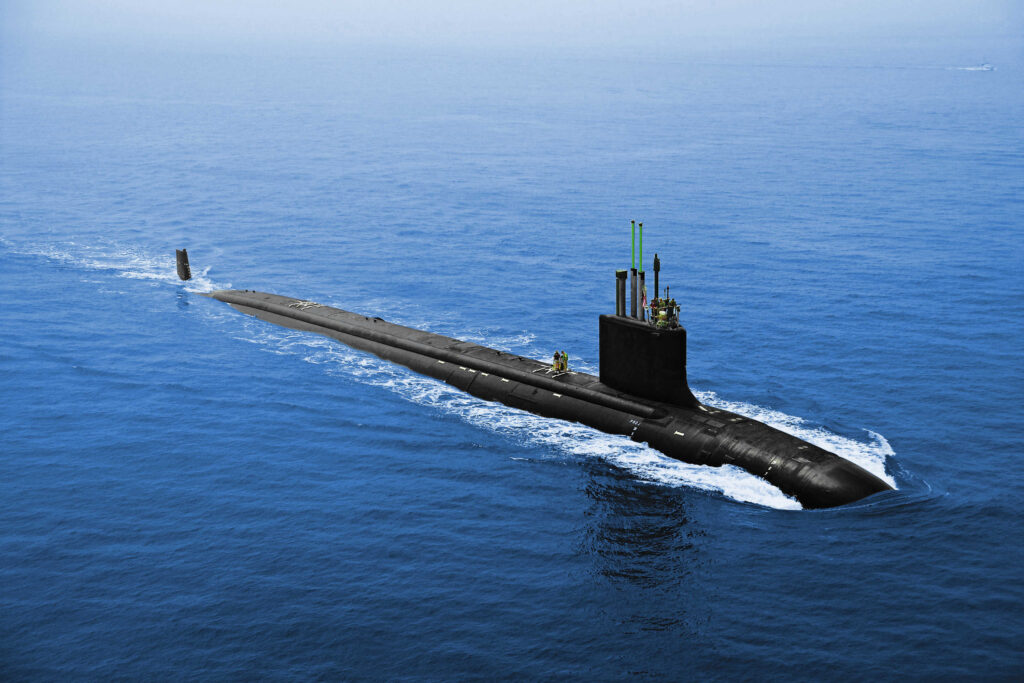
Today, a wide array of cruise missiles, long-range drones, and anti-ship missiles can be launched from submarines in addition to the compliment of torpedoes. Versatility has been a critical aspect of the submarine force in the post-Cold War era and during the War on Terror, where the ability to strike ground targets gave submarines relevance in this conflict with asymmetric forces.
The last of the SSN 688 (Los Angeles Class) attack boats of the late Cold War Era are slowly reaching the end of their operational lifespans. The Virginia Class (SSN 774) boats combine many different combat roles into one stealthy vessel. Undetectable, these submarines provide the ultimate in combat efficiency. At a cost of $2 billion per boat and with a crew of 135, these submarines can deliver a deadly blow to enemy ships, submarines, and land targets for a very reasonable investment. As the sailors of the Silent Service (bubble heads) like to boast: 1/7th of the Navy’s personnel operate 1/3rd of its warships. Reliability has not been a problem for the submarine service wherein boats must be rugged and survive in one of the harshest environments on Earth. As with other naval capabilities, the main problem is numbers.
The submarine force is now at about 60 attack submarines, but should be closer to 80. As the older 688 boats are retired, fewer Virginia Class boats will replace them until the Silent Service will fall to about 40 attack submarines by the middle of the century. To offer the most credible deterrence to Russia and China for the lowest cost, the US Navy will need to add 40 additional submarines, for a total of 80 operational boats, to its rolls by 2050 and sustain that number. Some cost savings could be achieved, perhaps, by returning to a pure attack submarine model. A new class could be developed based upon the Seawolf Class (SSN 21 boats), which was developed at the close of the Cold War to be the ultimate attack submarine. But the submarines it was meant to hunt were, by the turn of the millennium, rusting in Russian ports. Today, China has built up a large navy and Russia is resurgent. To deter these powers, an attack submarine with greater emphasis on anti-submarine and anti-ship warfare might be in order. Some have argued that the Navy should consider procuring diesel-electric boats which now include Air Independent Power (AIP). Hydrogen fuel cells provide power for sustained undersea operation so the submarines do not have to surface as frequently to recharge their batteries. Germany, Italy, and Israel already possess such submarines and China recently developed an AIP submarine of their own, the Lada Class.
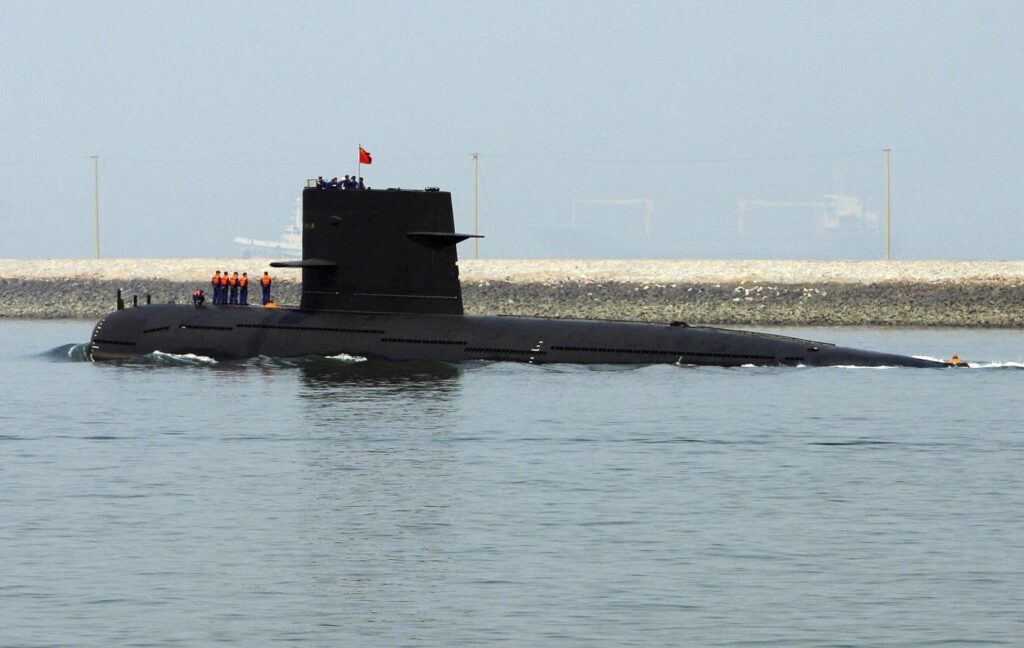
A larger American submarine force would certainly give Russia and China pause before picking a fight with the US.
The 350 Ship Navy
If a visionary Two Ocean Navy Act were to be considered today it would need to include a cost-effective way to increase and sustain the carrier force, greatly expand and sustain the submarine force, and replace our destroyers with a stealthy new class of ships. The current plan to return to a 300-ship navy is insufficient. An investment needs to be made today and planners and policy makers need to think outside the box. Most importantly, the Navy needs to stop its pattern of short-sighted cost savings and focus on the big picture. To that end, the Administration, Congress, and Navy leaders need to develop a plan to expand the Navy and properly finance it.
A plan can be made now to keep the peace for the future with a sustainable deterrence to war. The alternative, to create a circumstance where our forces become too weak to sustain that deterrence, is unthinkable.




